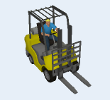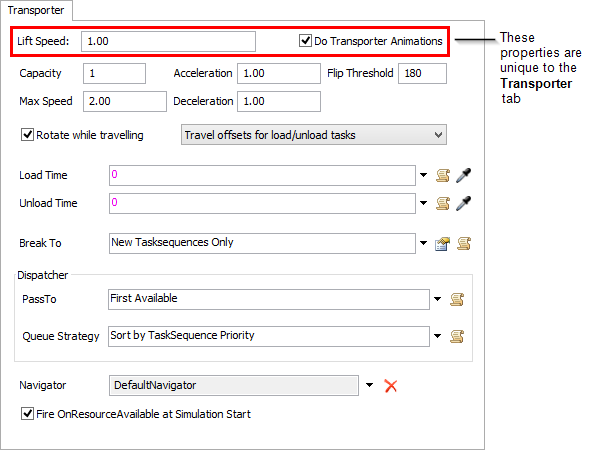Transporter
Overview and Key Concepts
The transporter is used mainly to carry flow items from one object to another. It has a fork lift that will raise to the position of a flow item if it is picking up or dropping off to a rack. It can also carry several flow items at a time if needed.

The transporter is a task executer. It implements offset travel in two ways. First, if there is an involved flow item for the travel operation, then it travels so that the front of the fork lift is positioned at the destination x/y location and raises its fork to the z height of the destination location. Second, if there is no involved flow item for the offset travel operation, then it travels so that its x/y center and z base arrive at the destination location.
Events
The transporter uses the standard events that are common to all task executers. See Task Executer Concepts - Events for an explanation of these events.
States
This object uses the task executer states. See Task Executer Concepts - States for more information.
Statistics
The transporter uses the standard statistics that are common to all task executers. See Task Executer Concepts - Statistics for an explanation of these statistics.
Properties
The transporter object has six tabs with various properties. The last five tabs are the standard tabs that are common to all task executers (except the dispatcher). For more information about the properties on those tabs, see:
Only the Transporter tab is unique to the transporter object. However, most of the properties on this tab are the same as the properties on The Task Executer Tab. Only the first two properties are unique to the Transporter tab.

Lift Speed
This property determines how fast the lift raises and lowers.
Do Transporter Animations
When this box is checked, the transporter object will use the default animations for this object. If you want to use your own custom animations, you should clear this box.
All Other Properties
See The Task Executer Tab for an explanation of the remaining properties.